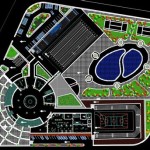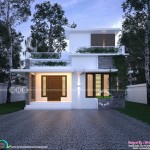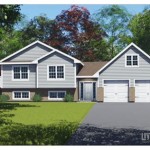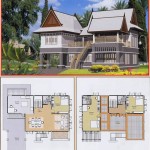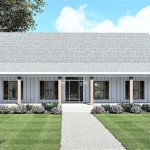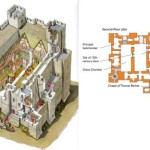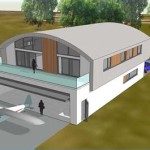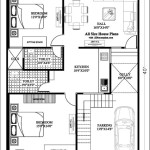Low Energy House Plans: Building for Efficiency and Sustainability
Low energy house plans prioritize energy efficiency and sustainability from the initial design stage. These plans incorporate various architectural and technological strategies to minimize energy consumption for heating, cooling, lighting, and other household needs. By reducing reliance on external energy sources, these homes contribute to lower utility bills, decreased carbon footprints, and a more environmentally responsible lifestyle.
Several key principles underpin low energy house plans. Passive solar design is a crucial element, utilizing the sun's energy for heating and daylighting. This involves carefully positioning windows and incorporating thermal mass to capture and store solar heat during the day and release it at night. Proper insulation plays a vital role in minimizing heat loss during winter and heat gain during summer. High-performance windows with low-E coatings further enhance insulation and reduce energy leakage.
Airtight construction is another critical aspect of low energy house designs. Minimizing air leaks through walls, roofs, and windows prevents drafts and reduces the workload on heating and cooling systems. This is achieved through the use of air barriers, sealants, and careful attention to detail during construction. Mechanical ventilation systems with heat recovery ensure a constant supply of fresh air while minimizing energy loss associated with ventilation.
Choosing energy-efficient appliances and lighting fixtures is also integral to low energy house plans. Energy Star-rated appliances consume significantly less energy than conventional models. LED lighting offers superior energy efficiency and longer lifespans compared to traditional incandescent or fluorescent bulbs. Smart home technology can further optimize energy usage by allowing for automated control of lighting, heating, and cooling systems based on occupancy and real-time energy prices.
The orientation and siting of the house are carefully considered in low energy designs. Optimizing the building's orientation relative to the sun maximizes passive solar gain in winter and minimizes overheating in summer. Landscaping can also contribute to energy efficiency by providing shade in summer and windbreaks in winter. Deciduous trees strategically planted near windows can provide shade during hot months and allow sunlight to penetrate during colder periods.
Selecting appropriate building materials is another crucial aspect of low energy house plans. Materials with high thermal mass, such as concrete or brick, can store and release heat, helping to regulate indoor temperatures. Sustainable and locally sourced materials minimize transportation costs and environmental impact. Recycled and reclaimed materials can also be incorporated to further reduce the environmental footprint of the construction process.
Water conservation is often integrated into low energy house designs. Low-flow fixtures, such as showerheads and faucets, reduce water consumption without compromising performance. Rainwater harvesting systems can collect and store rainwater for irrigation and other non-potable uses. Greywater recycling systems can reuse water from showers and sinks for toilet flushing and laundry, further reducing water consumption.
Low energy house plans offer a variety of architectural styles and sizes to suit diverse needs and preferences. From compact bungalows to spacious multi-story homes, the principles of energy efficiency can be applied to a wide range of designs. Many online resources and architectural firms specialize in low energy house plans, providing pre-designed options or custom design services.
The benefits of building a low energy house extend beyond reduced energy bills. These homes contribute to a healthier indoor environment by minimizing drafts, improving air quality, and reducing exposure to volatile organic compounds (VOCs) from building materials. The increased comfort and reduced environmental impact contribute to a higher quality of life for occupants.
Building a low energy house requires careful planning and collaboration between homeowners, architects, and builders. Thorough research and understanding of local building codes and energy efficiency standards are essential. However, the long-term benefits of reduced energy consumption, lower environmental impact, and increased comfort make low energy house plans an increasingly attractive option for environmentally conscious homeowners.
The initial investment in a low energy house may be slightly higher than a conventional build. However, the significant savings on energy bills over the lifespan of the home often offset this initial cost. Furthermore, various incentives and rebates may be available for homeowners who choose to build energy-efficient homes, further reducing the financial burden.
Choosing a low energy house plan represents a commitment to sustainable living and a responsible approach to resource consumption. By prioritizing energy efficiency from the design stage, homeowners can significantly reduce their environmental impact while enjoying the comfort and cost savings of a high-performance home.

Plans Passive Design Solutions Custom Home Builds Renovations

The First Low Energy House In Jordan Carboun Advocating Sustainable Cities Middle East And North

2 Bedroom Modern House Passive Home Plan With Garage And Screen Porch
What Does A Passive House Cost To Build Leanhaus

Cool Energy Efficient Concrete House Plans Houseplans Blog Com

Deltec Homes Renew Collection Ridgeline B 1604sf Passive Solar Layout Vaulted Ceilings High Clerest House Plans Floor Modern

Passive Solar Home In Stoneville Western Coveney Browne Architects

Passive House Plans Ekobuilt

Heatspring Free Floor Plan 10 Ways Passive House Design Is Diffe Than Normal Home

Green Passive Solar House Plans 3

